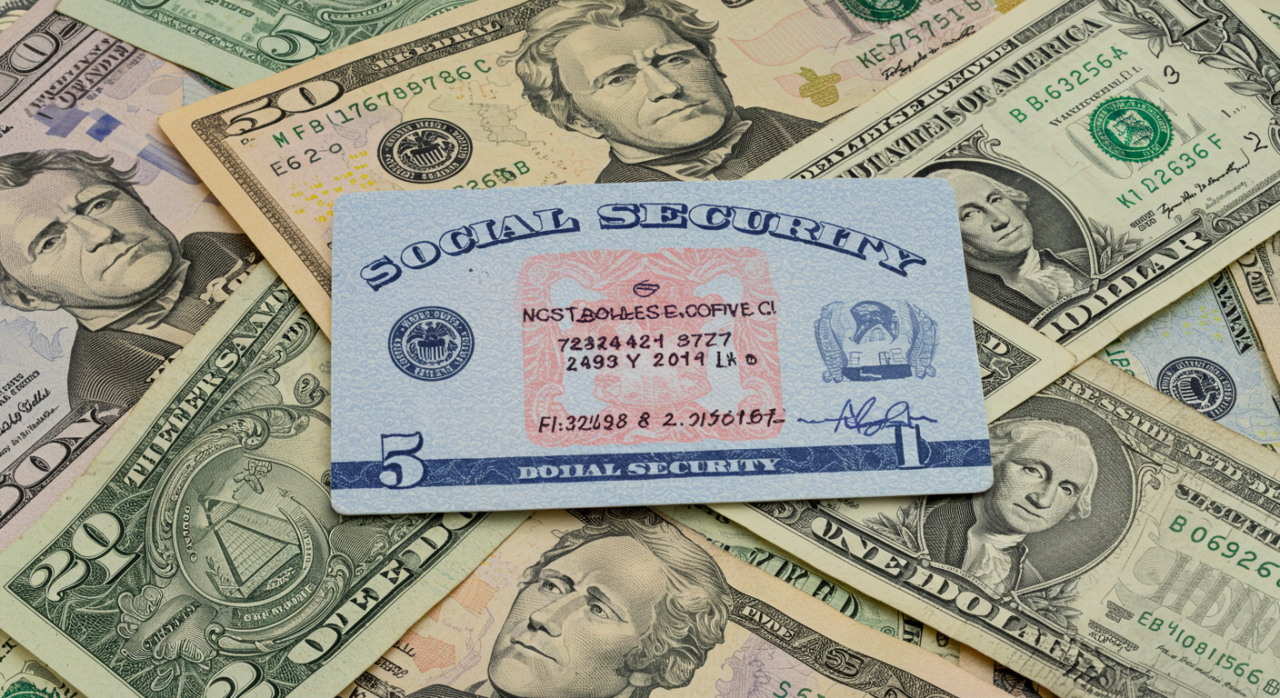Social Security Alerts, News & Updates
Social Security Paper Checks End September 2025 for 500,000 Americans

Here’s the thing about this transition. It’s not really about convenience (though that’s nice). It’s about keeping your hard-earned Social Security payments safe from thieves, making sure they actually arrive on time every month, and cutting down on administrative costs that we all end up paying for anyway. But what does this actually mean if you or someone you care about still depends on those monthly paper checks? Well, buckle up.
The Driving Forces Behind This Major Shift
So why would the Social Security Administration mess with a system that’s worked for decades? Well, actually, it hasn’t been working as well as you might think. We’ve all heard the stories about Social Security changes causing headaches. Three big problems have been getting worse and worse.
Security Concerns and Fraud Prevention
First, fraud has become a real nightmare for paper check recipients. Stolen mail, forged signatures, and check washing schemes are costing both beneficiaries and the government serious money each year. Think of it like this: would you leave cash sitting on your doorstep? Eventually, someone’s going to notice. Unfortunately, that someone might not be you.
Based on 2024 regulations, the SSA has documented significant increases in mail-related fraud targeting Social Security recipients. Electronic payments eliminate these vulnerabilities entirely by removing physical checks from the equation.
Delivery Reliability Issues
Then there are delivery delays with Social Security payments. Weather hits, the postal service has issues, or someone just makes a mistake. Suddenly your check shows up days or even weeks late. When you’re living on a fixed income, those delays aren’t just inconvenient. They can create real financial hardship. Like choosing between groceries and gas money.
Electronic payments, on the other hand, arrive consistently on your designated payment date regardless of weather conditions or postal service disruptions.
Administrative Cost Reduction
Processing costs have gone through the roof. Paper checks need manual handling, printing, mailing, reconciliation. All stuff that electronic Social Security payments handle automatically without breaking a sweat. It’s like the difference between hand-washing every dish versus having a dishwasher.
Mark Hinkle, who speaks for the SSA, put it pretty clearly in a recent statement: “We are committed to making payments safe, timely, and efficient for every American who relies on Social Security.” That’s the philosophy driving this push toward electronic payments that show up reliably on the same day each month, no matter what Mother Nature throws at us.
Understanding Who Needs to Take Action
The numbers here tell quite a story. Nearly 500,000 Americans still get their Social Security benefits by paper check. That might sound like a lot, but it’s actually a pretty small slice of the 71 million total beneficiaries. Still, these folks often fall into specific groups that have good reasons for sticking with traditional payment methods.
Demographics Most Affected
Many of the people affected are seniors over 75 who maybe don’t feel super comfortable with electronic banking. Or they’ve got longstanding relationships with their local post office. You know how that goes.
“I’ve been doing it this way for thirty years, why change now?”
Rural communities make up another big chunk, especially where banking services might be limited or require a long drive to access. Look, some beneficiaries previously opted out of electronic payments because they had concerns about technology or banking fees. That’s totally understandable. We’ve all been there with new technology.
The affected population breaks down like this:
- Social Security retirement beneficiaries still getting paper checks
- SSI recipients without bank accounts
- People in areas where banking services are hard to come by
- Beneficiaries who opted out of electronic payments before
Each group faces different challenges in making this switch, but the Social Security Administration has actually developed solutions for these diverse needs.
Your Path Forward: Available Payment Options
Making the switch doesn’t have to be a headache. You’ve got choices that can work with however you like to handle your money. According to SSA guidelines, all paper check recipients must either enroll in Social Security direct deposit or sign up for a Direct Express card. That’s a prepaid card program the U.S. Treasury sponsors.
Direct Deposit Setup Process
Direct deposit is probably the most straightforward option if you already have a bank account. Here’s how to set it up:
- Visit www.ssa.gov and log into your my Social Security account
- Call 1-800-772-1213 to speak with a representative
- Visit your local Social Security office in person
- Provide your bank routing number and account number
Your benefits will arrive on the same day each month. Typically the second, third, or fourth Wednesday, depending on when you were born. No more waiting for the mail or worrying about lost checks. It’s like having your paycheck automatically deposited, except it’s your retirement money. Many people find this method gives them better control over their Social Security benefits.
Direct Express Card Alternative
Now, if you don’t have a traditional banking relationship, the Direct Express card is actually a pretty excellent alternative. You don’t need a bank account, and your Social Security payments get loaded automatically each month. The card works just like a debit card at ATMs, stores, and for online purchases. Basically, it gives you the same access to your money that a bank account would. Pretty neat, right?
The Direct Express card comes with these features:
- No monthly fees for basic services
- Free ATM withdrawals at participating locations
- Online account management capabilities
- Customer service support in multiple languages
Getting Personal Assistance
Here’s something nice. If technology feels overwhelming or you just prefer talking to a real person, your local Social Security office can help you with this transition face-to-face. The staff there are trained to walk you through the whole process and answer whatever questions you have about your specific situation. Sometimes that personal touch makes all the difference between a smooth transition and months of confusion.
For personalized guidance about your specific situation, consult SSA.gov or contact your local Social Security office directly.
Consequences of Inaction: What You Risk
Putting this off could end up costing you big time. If you don’t update your payment method by the September deadline, you risk missing or delaying your monthly Social Security check. For someone depending on Social Security as their main income source, even a short delay can mean choosing between groceries and medication. That’s not a choice anyone should have to make.
Timeline and Warning System
Based on 2024 regulations, the SSA plans to send out final warning letters in mid-August to anyone who still hasn’t switched to electronic payments. Think of these letters as your last chance to take control of your payment method before the administration makes the decision for you. In some cases, the Social Security Administration might automatically enroll you in the Direct Express program. Which means you could end up with a payment method you didn’t actually choose.
Potential Disruption Scenario
Picture this scenario: September rolls around, and you haven’t made the switch. Your Social Security check doesn’t show up in the mail because the SSA stopped sending them. Now you’re scrambling to set up electronic payments while potentially missing a whole month’s worth of benefits. All that stress and financial hardship could have been avoided with a simple phone call or website visit months earlier. We’ve all procrastinated on important stuff, but this one’s got real consequences.
The Broader Impact on America’s Safety Net
Social Security serves as a financial lifeline for over 71 million Americans. Retirees, disabled individuals, survivors. The program’s reach goes way beyond individual recipients, supporting families and entire communities across the nation. Making sure Social Security benefits delivery runs smoothly becomes absolutely critical, especially with rising living costs and economic uncertainty making every dollar count more than ever.
Modernization in Context
This modernization effort actually reflects broader changes in how Americans handle money these days. We’ve all seen the steady decline in paper check use across pretty much every sector. It demonstrates a long-term shift toward digital payments that offer better security, tracking, and convenience. Banks, employers, government agencies have all moved toward electronic systems that cut costs and improve service.
A common mistake is thinking this Social Security news today only affects a small group of people. The reality is that these changes signal how government benefits will work in the future. Electronic payment systems provide better fraud protection and faster processing times for everyone involved.
Preparing for the Future of Government Benefits
This change marks the final step in a long-term effort to modernize Social Security benefit delivery. According to SSA guidelines, the administration had previously moved new beneficiaries to direct deposit by default, but they’d allowed existing paper check users to stay grandfathered in until now. The September 2025 deadline represents the end of an era and the beginning of a more secure, efficient system.
What This Signals for Other Programs
But this transition also signals broader Social Security changes coming to government services. As technology advances and security threats evolve, agencies have to adapt their delivery methods to protect citizens while keeping costs under control. This Social Security update likely gives us a preview of similar modernization efforts coming to other government programs. So we might as well get comfortable with electronic payments now.
Taking Action Before the Deadline
If you or someone you love still receives Social Security payments by mail, now’s the time to act. Don’t wait until those final warning letters show up in August. Take control of your financial security by choosing the electronic payment method that works best for your situation. Whether that’s direct deposit to your existing bank account or a Direct Express card, the key is making an informed decision before the deadline hits.
Key Points to Remember
The clock is definitely ticking toward September 2025, but you’ve got plenty of time to make this transition smoothly. Here are the essential facts:
- Paper checks for Social Security benefits end in September 2025
- Over 500,000 people must switch to electronic payments
- Your options include Social Security direct deposit or Direct Express card
- Doing nothing may delay your Social Security payments
These facts underscore why it’s so important to act sooner rather than later to protect your financial security and peace of mind. For the most current information and step-by-step guidance tailored to your situation, visit SSA.gov or contact your local Social Security office.
